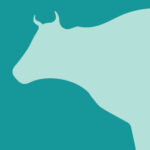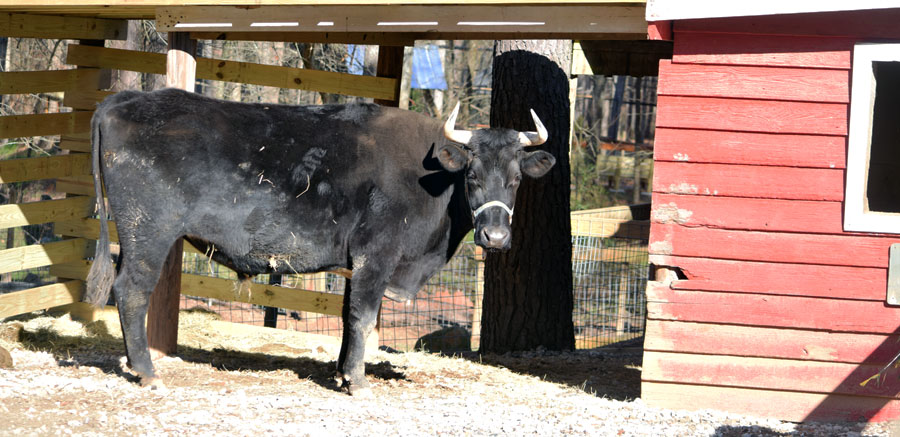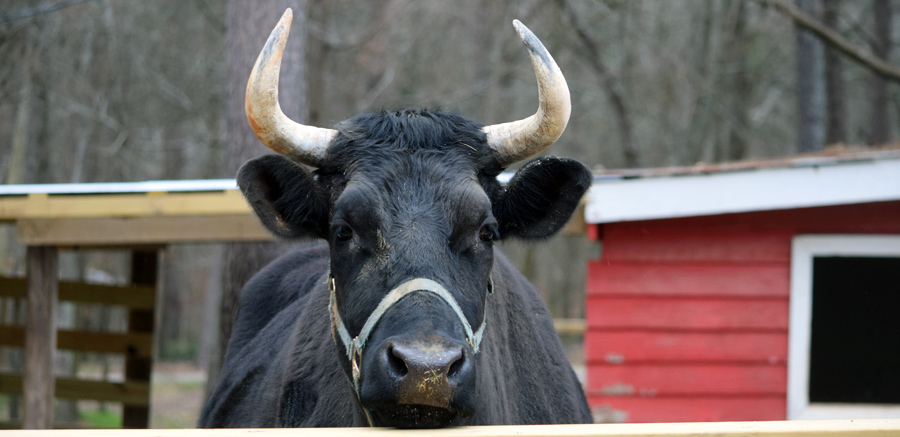
CATTLE
Cows can see almost 300 degrees, except for two small blind spots right in front of and behind them.
PROFILE
Ferdinand is our large black bull found in the petting zoo area of our sanctuary. He has charge horns that he very rarely uses because he is such a friendly bull. He came to us from a farm where other cattle are typically used for food. The owners felt Ferdinand was special and contacted us so we could let him live a long and happy life.
OVERVIEW
CONSERVATION STATUS
Least Concern
AVERAGE SIZE
Compared to a 6′ Man
AVERAGE WEIGHT
Females: 1,600 lbs
Males: 2,400 lbs
AVERAGE LIFESPAN
20 Years
DIET
Herbivore
REGIONS
North America
Cattle can be found across the globe. Cattle were first brought to the western hemisphere by Columbus on his second voyage to the New World in 1493. Spanish explorer Hernando Cortez took offspring of those same cattle to Mexico in 1519. In 1773, Juan Bautista de Anza brought 200 cattle to California to supply the early California missions.
APPEARANCE
Cattle have distinctive cloven hooves (derived from the toenails from the middle two digits of each foot). The size and weight of a cow are highly dependent on the breed. Some breeds are genetically polled (hornless), and many other cows may be dehorned (that is, have their horn buds destroyed) at a young age to make them easier to transport and safer to work around. Cows are renowned for their large milk-producing (mammary) glands known as udders, which possess four teats (nipples). Their coats come in a variety of colors and patterns. Most have short, coarse hairs but some, like the hereford, have soft, shaggy coats. Their backs range from strong and straight to large shoulder humps.


CHARACTERISTICS
Cattle are ruminants. This means they have one stomach with four separate compartments. Their digestive system allows them to digest plant material by repeatedly regurgitating it and chewing it again as cud. This digestive process allows cattle to thrive on grasses, other vegetation, and feed. A cow chews its cud for about eight hours a day. When an animal chews its cud it is a sign of health and contentment.
Cattle are raised primarily for meat, milk, and labor along with many useful by-products. Most cattle graze on grassland that is steep, hilly, dry, or rocky and not suitable for building houses or growing crops. The main reason cattle are raised in different climates and settings all over the world is because they can thrive on low quality rangeland feed and grasses.


